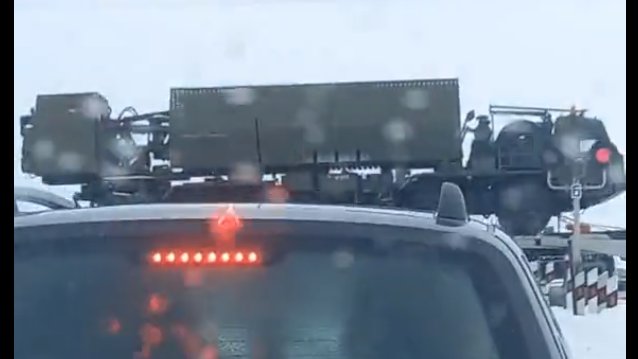 |
| Russian T-72B3 obr 2016 tanks near Ukraine |
For well over a decade, Russia has been actively building a capability to turn large training exercises into offensive military operations to minimize the suspicions of the buildup. This strategy was successfully employed in 2014 when Russian army occupied Crimea from Ukraine. The same type of maskirovka, or deception, was also used multiple times by the USSR.
During the massive Zapad 2017 exercise many western experts and pundits, myself included, were very worried that Russia would use it as a cover to stage an attack against Ukraine or even the Baltic states. Before Zapad 2017 I wrote a short checklist titled "To worry or not":
The list isn't comprehensive, but the Russian buildup during the January 2022 ticks all other boxes from that list, with the exception of Air Force assets being deployed to road bases, but that isn't strictly necessary given the availability of runways in the regions surrounding Ukraine.
The sheer volume of the deployment is also on a whole nother scale when compared to 2017 or even the 2014 invasion of Crimea. We are currently looking at the minimum of 80 battalions of combat troops, that are expected to grow to a hundred battalions in a week or so. And this isn't accounting the VDV airborne units that are able to deploy into the region in hours or days. The Russian deployment into Belarus is also focused to the southern border against Ukraine, instead of being spread across the country like in 2017. The Belarusian army is also mobilizing at least partly towards the same direction.
What sets this deployment apart from the previous ones is the ratio of enablers to combat troops. Running peacetime training requires a lot less supplies, redundancy in infrastructure such as communications and live munitions than a full fledged invasion against an opponent that has the level of firepower Ukraine currently has. Russia has also been building the required infrastructure. including fuel pipelines and repair depots along the Ukrainian border for years now.
The examples of enablers we have been observing lately inclure rare pieces of expensive equipment like Nebo-M long range radar sets and
R-416 radio relay systems, that are military district or high command assets, very rarely deployed to normal training exercises.
Similarly the shipments of equipment spotted recently have included significant amounts of reloads for missile systems such as S-300, BUK and
Iskander-M. These missiles are somewhat delicate and are usually stored in the special warehouses at their home bases. The units on training exercises have inert missile containers for the TELs and reloading vehicles, but no spares are being brought in on flatbeds like now, as it would be a waste of resources.
 |
| Iskander-M ballistic missiles |
 |
| Reloads for S-300V Army Surface to Air missile system |
Several other army and military district level assets such as the 2S7 203mm and 2S4 240mm SPG battalions, heavy MLRS regiments and separate engineering formations have also been deployed to the region.
These specialty equipments, combined with the combat troops, huge amounts of fuel tankers, pipeline troops, munitions trucks and general logistics vehicles indicate that Russia is building a real capability to invade Ukraine, or parts of it. The costs of this deployment, ranging from Kaliningrad, whose marines are heading towards Eastern Mediterranean at the moment, accompanied by their Northern Fleet colleagues, to the 64th Covering Division, that was pulled from its regular duty of protecting the Chinese border in the Russian Far East, is crippling to the Russian military budget. The deployment has also thrown all normal training schedules to the bin and it will have negative effects on the Russian capabilities in the long run.
Backing down from this level of investment without visible gains would be a tremendous show of weakness for Putin. With the diplomatic path to concessions by the West seemingly stonewalled and Ukraine not capitulating without a fight, the only option for real gains is warfare.
The time window for that is also limited, not only by the prevailing weather conditions and the costs, but also due to supplying forward deployed field hospitals with blood that only has a shelf life of a few weeks.
Time to get serious with helping Ukraine is now!




